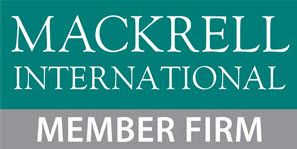By William G. Fig
Published in the OSB Construction Law Section Newsletter
When a lien is recorded against the real property upon which an improvement is being constructed, it usually results in an unhappy lender and property owner and, likely, a stern call from the property owner to the general contractor working on the subject project. The lender is displeased, of course, because the recorded lien puts its security interest in the collateral, i.e. the real property, at risk
This is especially true in Oregon where construction liens can have “super priority” over a previously recorded lender’s deed of trust. The recording of a construction lien against the owner’s property likely constitutes a technical default of the terms of the owner’s loan documents with the lender. The unhappy lender will usually demand that the owner address the lien or risk having its loan called. Likewise, the recording of a lien by a subcontractor or material supplier likely constitutes a breach by the general contractor of the terms of its contract with the owner. The owner, likely in response to pressure from its lender, demands that the general contractor remove the lien from the property. This chain of events is exactly why an aggrieved claimant records a lien.
Unfortunately, a claimant may record a lien of questionable validity in the hope the aforementioned friction between the owner, lender, and general contractor will result in a quick payment to the claimant. Understandably, an owner and/or general contractor (hereinafter “Respondent”) do not want to pay off a bogus lien simply because they are being pressured to do so. So, what is a Respondent to do? The Respondent should (or at least can) do three things.
First, if no notice of intent to foreclose the lien has been received, under ORS 87.027, the Respondent can send a written demand to the lien claimant for a list of materials or equipment or description of labor or services supplied or a statement of the contractual basis for supplying the materials, equipment, services or labor, including the percentage of the contract completed, and the charge therefor to the date of the demand. If a notice of intent to foreclose has been received, under ORS 87.057(2), the Respondent can send a request to the claimant for a list of the materials and supplies with the charge therefor, or a statement of a contractual basis for the owner’s obligation. If the claimant does not respond within the time lines set forth under each respective statute, 15 days (not including Saturdays, Sundays and other holidays) and 5 days respectively, the claimant is not entitled to recover attorney fees incurred in foreclosing its lien. The loss of the recovery of attorney fees is a powerful blow to a claimant’s lien claim, especially if the amount of the lien claim is small.
The second action the Respondent can take is to send a written demand to the claimant under ORS 87.076(4) that it release the lien and stating that, if the lien is not released, the Respondent may recover the actual costs incurred in complying with ORS 87.076, ORS 87.078 and ORS 87.081 (the steps to bond around a lien) or the sum of $500, whichever is greater. Moreover, if the lien is not released within 10 days after such demand is delivered to the lien claimant and the lien claimant does not bring a suit to foreclose the lien within the time provided in ORS 87.055, the lien claimant is liable for the same damages. ORS 87.076(4). This can be a bit of counterpressure for the Respondent to apply to a claimant who files a questionable lien (that it does not intend to foreclose) in an attempt to leverage a quick settlement payment from Respondent.
Lastly, a Respondent may “bond around” a lien. This process, covered by ORS 87.076-87.081, removes the lien from the property and replaces the property with a bond or a cash deposit with the county treasurer in a sum equal to 150% of the lien amount. See also ORS 87.083(1) (release of property). This protects a lender’s security and allows the property to be sold or refinanced. When a lien gets bonded around, the lien claimant knows the matter 1S not going to go away quickly. However, on the flip side, the lien claimant also knows it will be pursuing a designated pool of money rather than foreclosing and selling a property of unknown value.
Bonding around a lien consists of three steps – the recording of the bond/tender of payment, notice to the claimant of the bond recording/payment, and the recording of an affidavit that proper notice was given to the claimant. The failure to timely comply with the second step of this process renders the bond/payment ineffective. ORS 87.078(2). There appears to be no case law regarding the impact of failing to properly record the affidavit. Under ORS 87.086, the claimant may petition the court challenging the adequacy of the bond for a reason other than the amount.
Now to reward those of you who hung in until the bitter end. As said above, under ORS 87.076(1), the required bond/cash deposit amount to bond around a lien is 150% of the lien claim amount. The 150% covers 100% of the lien claim amount with the additional 50% available to pay for attorney fees incurred in foreclosing the lien. ORS 87.060(5). So, on a small lien claim of say $12,000, the bond/cash deposit amount would be $18,000. That means a maximum of only $6,000 for attorney fees. If the Respondent has no other potential fee liability to the lien claimant, bonding around a lien can be a powerful disincentive for the claimant to foreclose its lien claim. It also negates the tail (the fee claim) wagging the dog (the lien amount) in settlement discussions. Conversely, the math works in the claimant’s favor as the amount of the lien claim increases and, as a result, the amount available for attorney fees increases. This somewhat limits the owner’s benefit of bonding around a lien. However, absent bonding around a lien, the claimant’s attorney fee claim is uncapped (as is the owner’s exposure thereto) and the fee claim will likely be paid in full so long as there are sufficient funds available from the foreclosure sale of the subject real property.
In addition, under ORS 87.076(3), “[a] person may file a bond or deposit money under subsection (1) or (2) of this section at any time after the claim of lien is filed under ORS 87.035.” (Emphasis added). This statute can also have a devastating effect on lien claims, especially small ones. By way of example opposing counsel has been aggressively litigating the above $12,000 lien claim with the expectation of recovering all of his/her fees, which counsel informs you are double the amount of the lien, from the impending judicial foreclosure. Just before the settlement conference, you have your client bond around the lien. Under ORS 87.076(1), counsel’s fee claim should now be limited to $6,000 and his/her incentive to try the foreclosure claim has likely evaporated.
While the recording of lien claim with questionable validity is frustrating to an owner, lender, and/or general contractor, these parties are not without recourse. A savvy owner, lender or general contractor should consider all of the aforementioned proactive steps to respond to such a lien. Taking these steps could potentially limit the claimant’s recovery and encourage an early and modest resolution of the claim.
Contact Bill at wfig@sussmanshank.com or (503) 227-1111.


